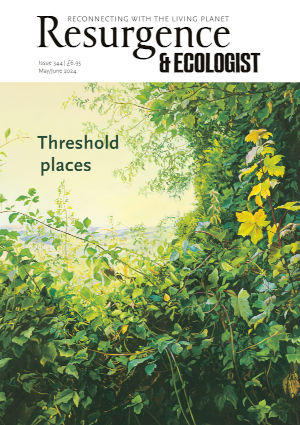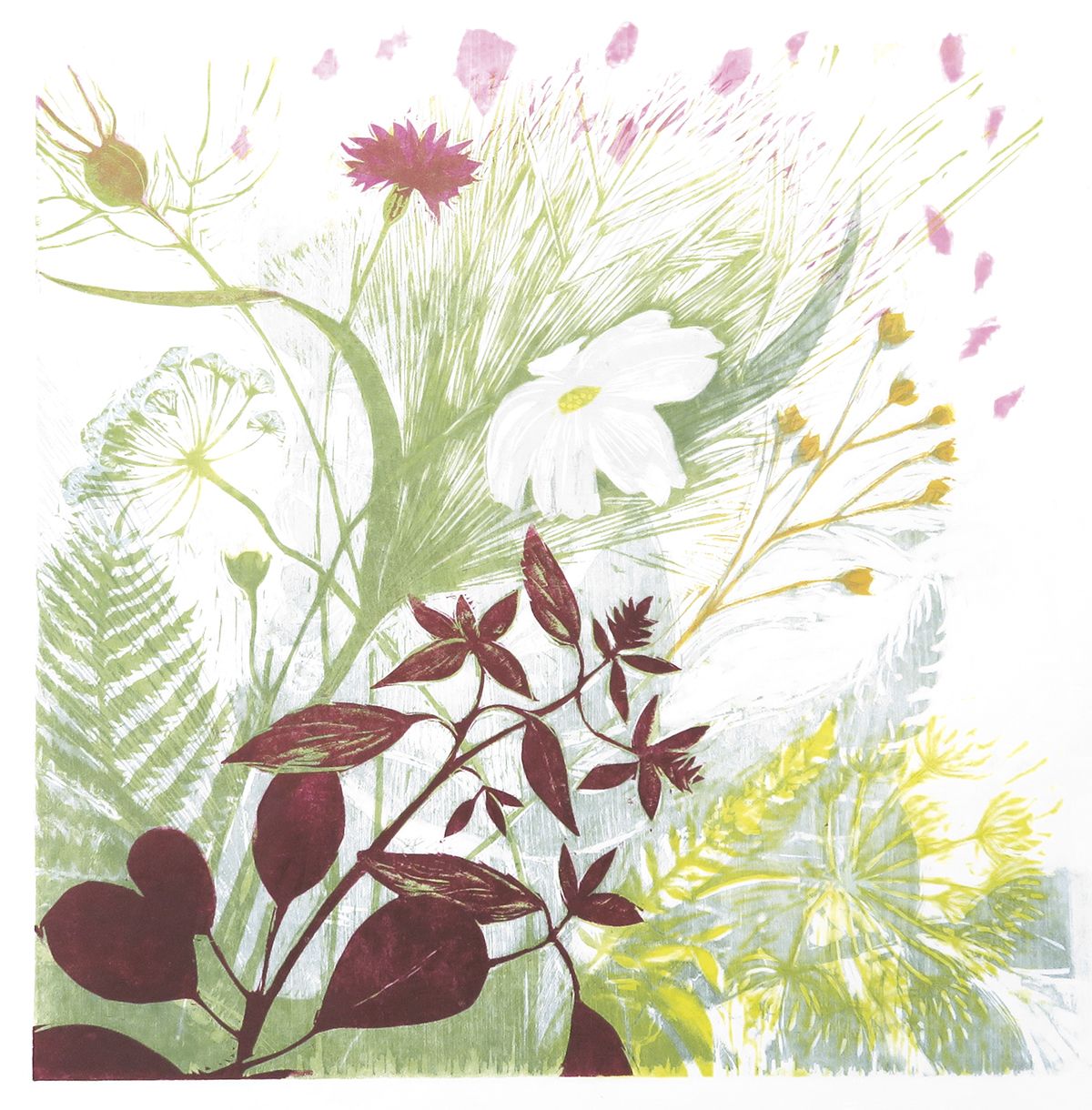Some years ago, we moved from a 1930s semi with a handkerchief garden to an old house with a rambling plot. At first I was enchanted: the garden, with its sloping lawn, flower beds, veg patch and steep, wooded bank was magical. I would go out at night, astonished at the number and clarity of the stars and, during the day, I would scramble about in the woody wilderness with all the joy of a young child excitedly exploring her new surroundings.
This innocence didn’t last. Soon I began to realise that the garden was too much for us. It didn’t matter how long I spent outside, I never seemed to get on top of the bindweed and brambles, and I became dispirited. We found a tree surgeon, who reduced the height of some of the trees, stacking the brash in woven hazel ‘baskets’, and between them he built a path up to a decked seating area, which gave us a spectacular view across the valley. Lower down he built a wildlife pond, which soon filled with water boatmen, frogspawn and dragonflies.
These rapidly became my favourite parts of the garden. But the rest of the plot remained overgrown and troublesome: bindweed wrapping itself around every available stem, and brambles working their way up through the middle of a hebe or a privet hedge, only to arch gracefully over the top and down into the clover-and-dandelion-filled lawn.
So I was cheered to read a piece by writer and gardener Alys Fowler, in which she suggested learning from Nature, rather than imposing on our gardens our traditional ideas of how things “should be done”. I spoke to Fowler, who, with 30 years’ experience gained at the Royal Horticultural Society and the Royal Botanic Gardens, Kew, had this to say:
“Everything is a wild flower until it’s doing too well, and then it’s a weed! And when something is doing too well, it’s telling you something about the ecology of your garden.” She resists the binary view of ‘good’ and ‘bad’ plants, insisting that there is “such a long line between good and bad” and pointing out that weeds tend to be “very good at supporting insects”.
Something else that gave me hope was the discovery that residential gardens in the UK are estimated to cover over a million acres, which, according to The Wildlife Trusts, is more than the amount of land covered by our National Nature Reserves. Gardeners are not going to solve the biodiversity crisis on their own, but it occurred to me that this is a huge resource for tackling the problem, and an area in which we can recover a small sense of empowerment in the face of what often seems like an almost overwhelming situation.
Dave Goulson, professor of biology at the University of Sussex and author of The Garden Jungle, agrees: “Gardens can play an important role in turning us around,” he says, “because there are a lot of them – around 22.7 million, covering nearly 450,000 hectares of land. And that’s enough to make a difference.”
Slightly less cheerful is the 2023 ‘State of Nature’ report, which revealed that nearly one in six species of plants and animals in Great Britain is at risk of extinction. All the more reason then for those of us lucky enough to have a bit of green space to encourage as much wildlife as possible into it. “We all feel helpless in the face of what’s going on,” says Goulson, “but if you can work on your own little patch and make it better, you’ll soon see the rewards. You only have to plant a lavender bush and in five minutes there’s a bee on it.”
It seems that a sense of urgency about the biodiversity crisis has even begun to spread into more traditional sections of the horticultural world. The Best Show Garden at the RHS Chelsea Flower Show in 2022 was Lulu Urquhart and Adam Hunt’s ‘A Rewilding Britain Landscape’, and last year ‘The Centrepoint Garden’ won Best Construction Award for a plot in which Nature had been allowed to take over. The RHS has even rebranded weeds as hero plants.
Fowler, who is working on a book about peat and peatlands, says that what interests her is people understanding the ecology of their own spaces: “Ecology can teach us so much and really enrich the way we garden,” she says. “The thing about ecology is how important relationships are, and I think that much of our climate crisis is a relational crisis. It’s as if we’ve forgotten how to be in a relationship with our environment, with our seasons, with each other – we’ve forgotten how to be good guests in our own gardens.”
This helps me look at my own garden in a completely different light and offers a much clearer picture of what I need to do – or, in some cases, not do.
How to encourage more wildlife into your garden
• Grow some native wild flowers
Studies show that they attract more pollinators than non-natives do
• Make a compost heap
Compost makes good mulch and is home to many invertebrates
• Start a pond
Even if it’s just a builder’s tub. Make sure wildlife can get in and out
• Mow your lawn less often
And leave a section of it uncut to encourage
wild flowers
• Have plants of varying heights
Doing this provides habitats for different
species of insect
• Create a stack of deadwood
Even a pile of twigs can provide a home for wildlife
This advice is from Alys Fowler and Dave Goulson.







